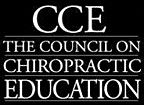Counseling patients on habits and lifestyle has long been a part of chiropractic practice, identified by doctors of chiropractic1,2 and those who study what doctors of chiropractic say they do in practice.3,4 Vear included counseling in the standards of chiropractic practice in 1992, stating that "chiropractic educational institutions place great emphasis on patient counseling."1
This was expanded in the 2004 Standards6: "A doctor of chiropractic is a primary care physician whose purpose is to help meet the health needs of individuals and of the public. The doctor of chiropractic's responsibilities as a primary care physician include wellness promotion" and to "promote wellness by assessing health risk and providing problem-related, general health information and lifestyle counseling."
 While the CCE Standards note that health promotion and wellness are part of the doctor of chiropractic educational program, no competencies have outlined the specific behavioral objectives to guide the teaching and assessment of these topics.7 In 2004 and again in 2005, specific health promotion and wellness competencies were submitted for consideration by CCE.
While the CCE Standards note that health promotion and wellness are part of the doctor of chiropractic educational program, no competencies have outlined the specific behavioral objectives to guide the teaching and assessment of these topics.7 In 2004 and again in 2005, specific health promotion and wellness competencies were submitted for consideration by CCE.
Goals
The goals of these specific wellness competencies are designed to facilitate:
- patient understanding of factors that promote wellness;
- a proactive approach that encourages patients to take responsibility for their health;
- skills for counseling patients on healthy habits and lifestyle;
- strategies for working with patients in a partnership for shared decision-making.
Definition
The CCE has approved the following glossary definition of wellness: A process of optimal functioning and creative adaptation involving all aspects of life. Health is a state of optimal well-being and functioning; wellness is an active process employing a set of values and behaviors that promotes health and enhances quality of life.
Objectives
The following specific competencies, approved by CCE for implementation in January 2007, outline the attitudes, knowledge and skills each student is expected to acquire prior to graduation:
Wellness
- Attitudes
The student must demonstrate the ability to:- appreciate how lifestyle, health status, behavior, and psychological factors interplay in the overall health and wellness of the patient;
- appreciate the multidimensional character of patient wellness including the physical, intellectual, emotional, and spiritual dimensions;
- appreciate and accept active patient participation as an essential component of their health care;
- effectively explain and appropriately emphasize the significant benefits that health promotion measures can have on response to treatment;
- appreciate community-level health care issues and the doctor of chiropractic's role in community health care;
- recognize and appreciate the significant impact that environmental influences may have on a patient's overall well-being; and
- appreciate the broad social determinants of health.
- Knowledge
The student must demonstrate the ability to:- discuss the basic principles and perspectives of health promotion, and wellness;
- describe the concepts of health promotion in the context of chiropractic health care;
- describe the essential components of health promotion appropriate for the needs of the patient and the public;
- describe the role of the doctor of chiropractic in health promotion;
- relate the specific needs of patients and the public to the lifestyle changes necessary for their health promotion;
- identify the resource materials available to help in educating patients and the public about health promotion and wellness;
- identify the minimum screening activities for necessary health promotion;
- describe principal trends evolving in the implementation of, and health impact and affected population for, each of the leading health indicators (physical activity, overweight and obesity, tobacco use, substance abuse, responsible sexual behavior, mental health, injury and violence, environmental quality, immunization, and access to health care); and
- describe the goals, issues, trends and disparities related the focus areas of increased quality and years of healthy life, and elimination of health disparities.
- Skills
The student must demonstrate the ability to:- communicate effectively with patients about aspects of their health, including biological, psychological, social and spiritual, as part of comprehensive history-taking;
- demonstrate appropriate techniques to encourage patient participation in a shared responsibility for the patient's health;
- demonstrate recommended preventive screening activities;
- perform common screening procedures and wellness assessments in different age groups, and provide patient counseling for health promotion
The importance of these competencies includes standardization of health promotion and wellness procedures in chiropractic practice and greater recognition for the role doctors of chiropractic play in a model that goes beyond the treatment of disease. Health promotion and wellness is not just prevention of disease, but a proactive approach to health that engages the patient in a partnership to move them toward a healthier lifestyle.
Chiropractic health promotion and wellness is patient-centered and promotes patient satisfaction. The characteristics of patient-centered chiropractic care were noted when searching for the optimal paradigm for chiropractic education and research. These characteristics emerged from studies by sociologists, psychologists and medical anthropologists that described what doctors of chiropractic do in practice.9
Health Promotion, Wellness and Patient-Centered Care
Patient-centered practice emphasizes self-healing, a holistic approach to the patient, and a humanistic attitude with regard to the patient/doctor partnership. Doctors of chiro-practic who emphasize wellness in their practices work with patients as partners, preferring minimally invasive procedures and therapies. The importance of helping patients to understand that the body has the innate ability to heal without always resorting to invasive drugs and pro-cedures prevents all-too-common side effects. Doctors of chiropractic have traditionally emphasized the innate ability of the body to heal. The detailed knowledge of the mechanisms that regulate and repair the human body (homeostasis) is essential to promoting a vital dynamic balance and emphasizes the importance of a healthy immune system in the promotion of wellness. The goals of care are: to optimize function and performance; to balance structural components especially the spine; to enhance the interaction between the nervous system control of body systems and spinal articulations; and to maximize the functional capacity of structural components in joints, supporting muscles and connective soft tissues.
Humans are complex organisms, and the causes of negative health events are multifactorial.6 A holistic approach to health care recognizes that there is a relationship among the component parts of the body. It is important that a diseased or dysfunctional body part is not seen as separate from the body as a whole. Wellness practitioners recognize that to achieve optimum health, doctors must treat the whole patient, not just isolated body parts. Care of the total person requires a willingness to address the full range of difficulties that the patient brings to the doctor, including psychological and social problems in addition to the customary physical dysfunction.
It is important that wellness practitioners acknowledge and respect patients' values, beliefs, health care needs and expectations. It is also important that they connect in meaningful and helpful ways. Approaching patients with unconditional positive regard, empathy and genuineness is essential to a partnership that promotes health and facilitates wellness. Wellness doctors of chiropractic work together with patients to develop a practical, lifelong plan that encourages a healthy lifestyle. They invest time and energy to incorporate screening tools to counsel on health risks, conservative interventions and community resources. Rather than needing to "take charge," they promote an active approach that partners with patients and encourages them to act responsibly for their health. Shared decision-making emphasizes the importance of the patient's role in compliance with a healthy lifestyle. Doctors of chiropractic who promote health and wellness work with patients to manage effectively and economically the full range of health care conditions, including those that are preventable or treatable and those that require referral to other practitioners. Chiropractic wellness practitioners have a logical set of beliefs based on scientific evidence that appeal to common sense, and promote a holistic approach to health promotion that facilitates wellness.7
Conclusion
Doctor of chiropractic degree programs currently provide instruction in health promotion and wellness procedures, but equivalence of competency is not evident. A wide variation in curricula among chiropractic schools is apparent, with the subject matter related to health promotion and wellness spread over multiple courses. With adoption of specific CCE clinical competencies effective in 2007, the education of chiropractic students in the areas of health promotion and wellness will become more standardized to better serve the public and the patient's interests.
References
- Vear HJ. Chiropractic Standards of Practice and Quality Care. Gaithersburg, MA; Aspen, 1992: pgs 49-61.
- Coulter ID. The patient, the practitioner, and wellness: paradigm lost, paradigm gained. J Manipulative Physiol Ther 1990;13(2):107-110.
- Christensen MG, Kerkhooff D, Kollasch MW. Job Analysis of Chiropractic 2000; Greeley, CO: National Board of Chiropractic Examiners.
- Christensen MG. Job Analysis of Chiropractic 2005; Greeley, CO: National Board of Chiropractic Examiners.
- Council on Chiropractic Education Standards 2003.
- Council on Chiropractic Education Standards 2004.
- Hawk C. Wellness Hypothesis. In: Leach R (ed.) The Chiropractic Theories. A Textbook of Scientific Research. Baltimore, MA. Lippincott, Williams and Wilkins 2004; pgs 399-416.
- Appendix III: Glossary. Council on Chiropractic Education Standards 2006; p. 60.
- Gatterman MI. A patient-centered paradigm: a model for chiropractic education and research. J Alternative and Complementary Medicine 1995;1:371-386.
Click here for previous articles by Meridel I. Gatterman, MA, DC, MEd.





